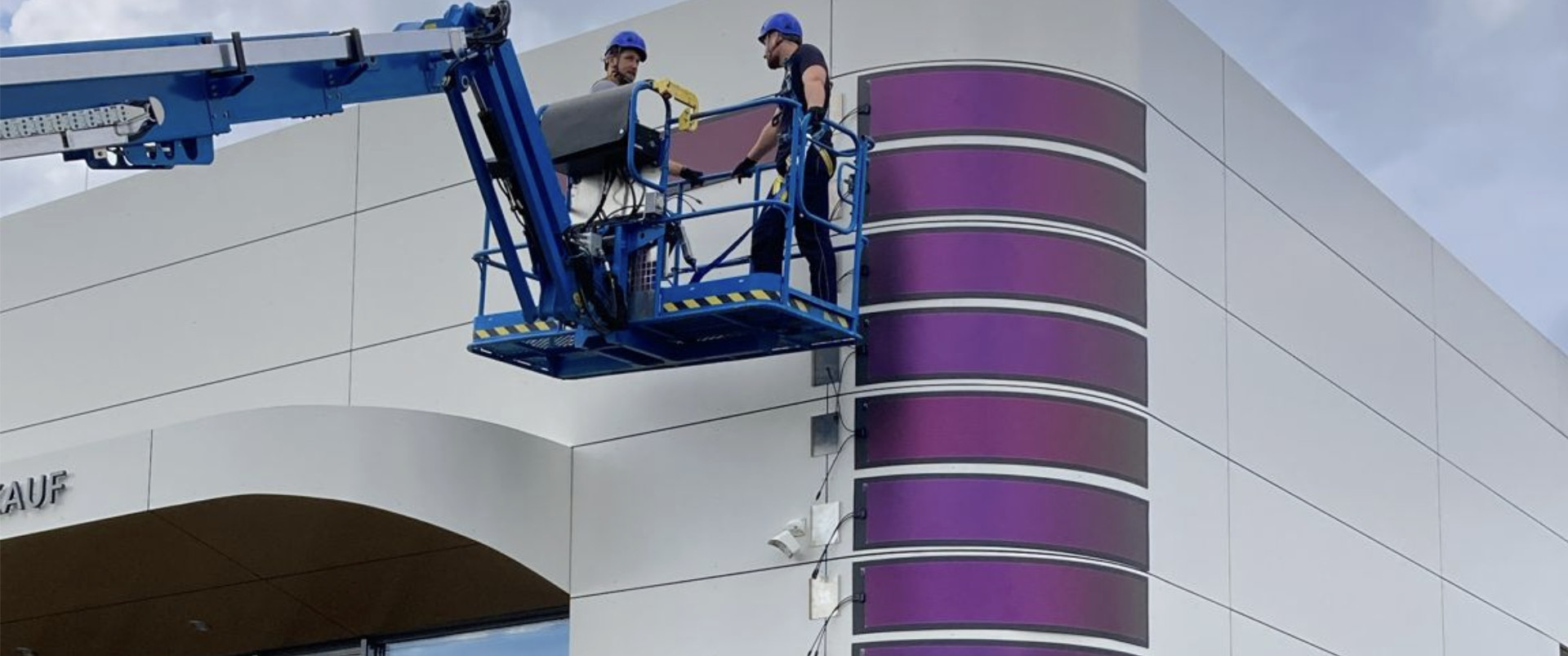
ABOUT EXPERIMENT PARTNER AND PRODUCT
As the technology leader in organic photovoltaics, Heliatek develops, produces and distributes industrial-grade organic PV solar solutions for virtually any building surface (horizontal, vertical, curved, rigid, and flexible). Heliatek stands for energy solutions designed for various traditional and never been possible before applications based on its unique features – it is ultra-light, flexible, ultra-thin and truly green.
MEASUREMENT & VERIFICATION (PM&VL 1)
PM&VL1 has set-up a dedicated test chain for a comprehensive Building Integrated Photovoltaic (PV), Solar Thermal (T) and hybrid Photovoltaic/Thermal (PV/T) façade systems characterization, facing both Efficiency and Safety requirements. This PM&VL is managed by TECNALIA, the leading private and independent research and technology organization in Spain, with the goal of transforming knowledge into GDP.
PARTNERS
Scientific partner
Tecnalia
Industrial Partner
Heliatek
Main author:
Izaskun Álvarez
Leitat
These innovative products are usually out of standardised assessment methods and that is why, to offer manufacturers evidences about the safety, liability and robustness of their systems within the building envelope market, new assessment methods have been developed. In this case the design of experiments is based on two new assessment methods, each of them intended to cover a specific need.
1. There are currently no specific regulations for evaluating façade systems with solar harvesting technology, either from an energy perspective or from the point of view of construction requirements. Test based on new experimental procedure under real weather conditions has been developed to evaluate constructive integration capability, energy production, and simultaneously compare it with certified reference technologies.
2. Optical measurements are typically done at 90º. To know which is the optimal orientation of a BIPV product, it is proposed to do this measurement at any incident angle. Characterizations have been done to know how PV behaves under solar radiation and, also, how energetically they behave.
Design of Experiments
The following tests have been performed:
1- Performance characterization in ‘real’ conditions – Innovative procedure
2- Optical test at different incident angles
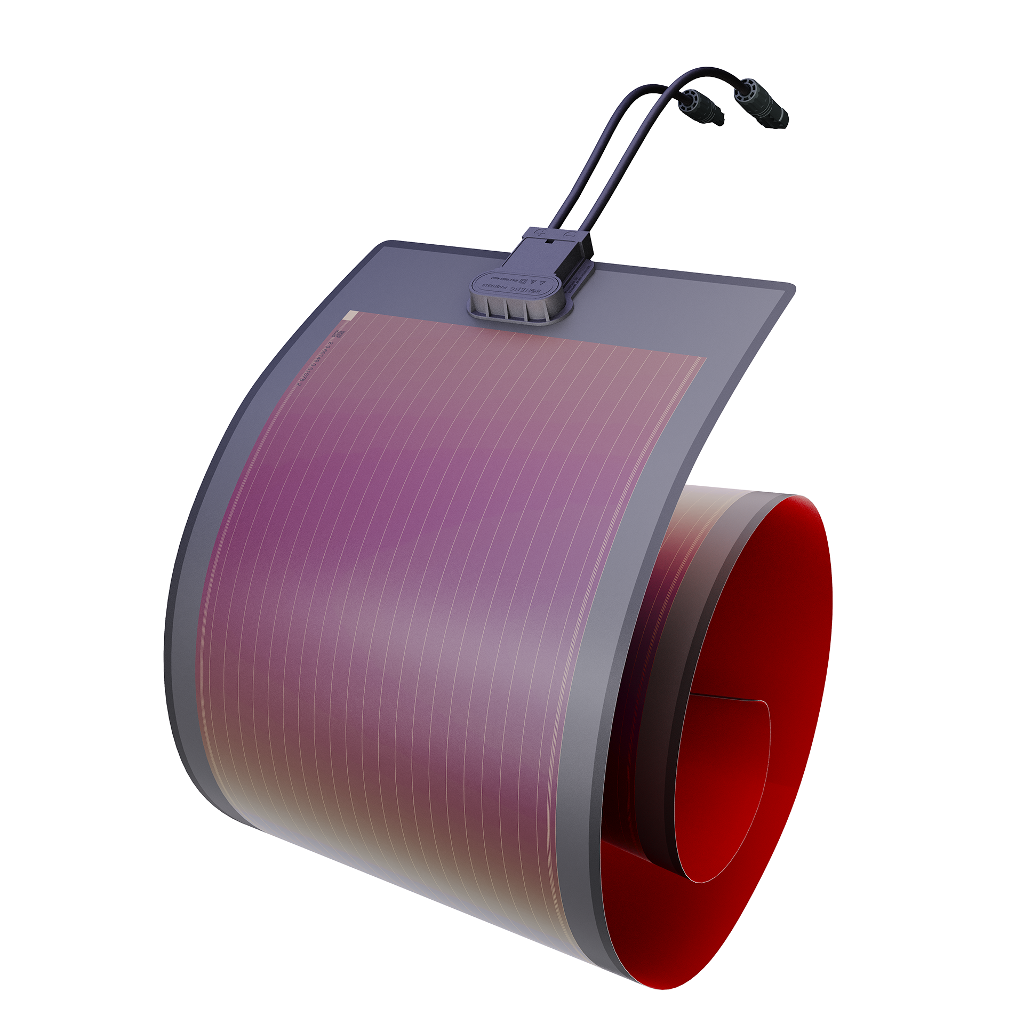
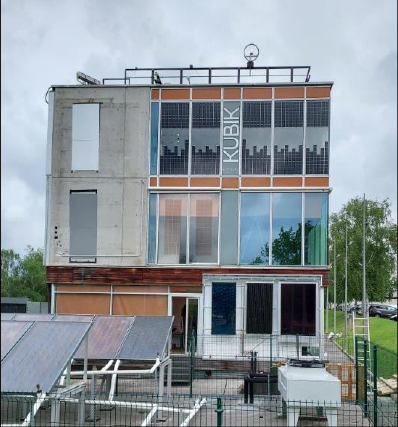
Test bench to assess the performance characterization in ‘real’ conditions
Results
Main results/outcomes of each tests/assessment procedures:
1- Following approximately one year of data collection, with the application of selective filtering to exclude non-representative values and mitigate certain disruptive effects, the Performance Ratio (PR / IEC 61724) indicator has been utilized to assess the system’s performance under real-world conditions. As can be observed, the values range between 0.65 and 0.8, which, according to “Technical Report NREL/TP-5200-57991”, are the expected range for this type of component (irradiance sensor* and test panels are in the same orientation and tilt angle (90º)).
* Irradiance sensor = Pyranometer. Hence the drop in PR values in May-June, since a pyranometer will capture more irradiance than the PV panel receives in the months when the sun is higher.
2- The determination of the normal-hemispherical reflectance between 280 and 2,500 nm has been done. In this case, only the first sample of each series has been shown. This choice was taken because no significant differences has been detected between samples of the same series. Directional reflectance for different angles of incidence of radiation and different sample angles have been determined. In this case, only the maximum and minimum angles of each series are shown. This choice was taken to show the maximum and minimum differences. Middle angles are compressed.
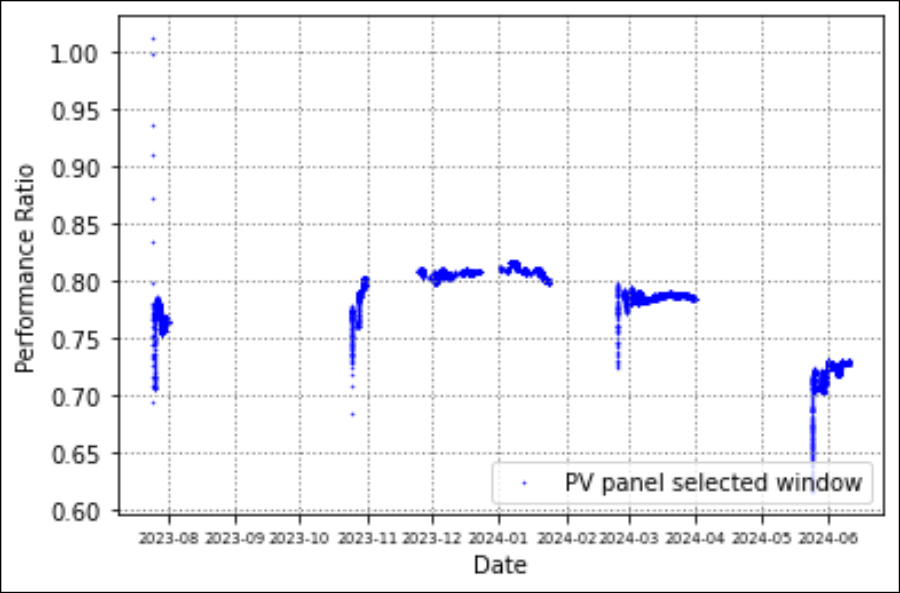
Performance ratio of HeliaSol from 2023 July to 2024 June

Results of the light normal-hemispherical reflectance and the solar direct normal-hemispherical reflectance.
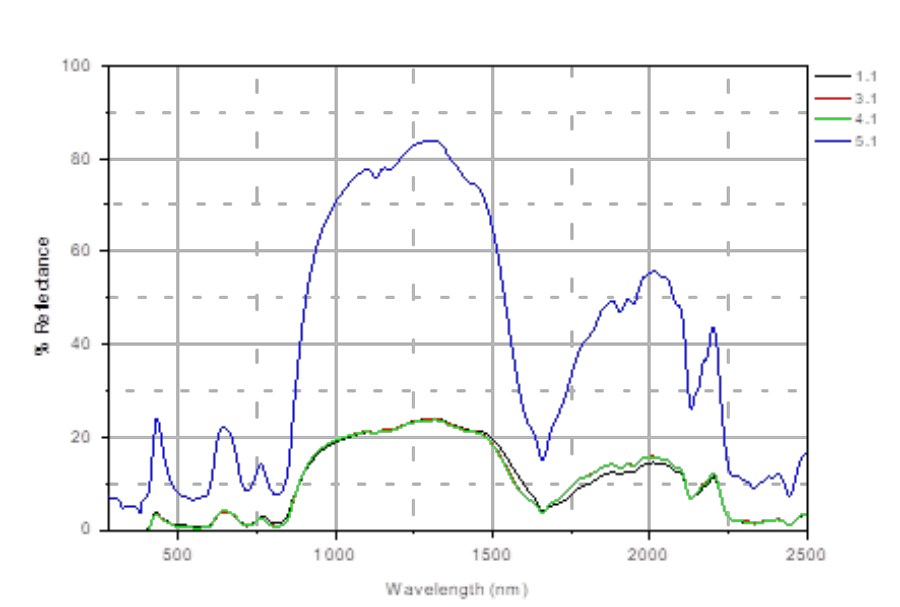
Spectral reflectance test specimen angle 20° detector angle 40°.
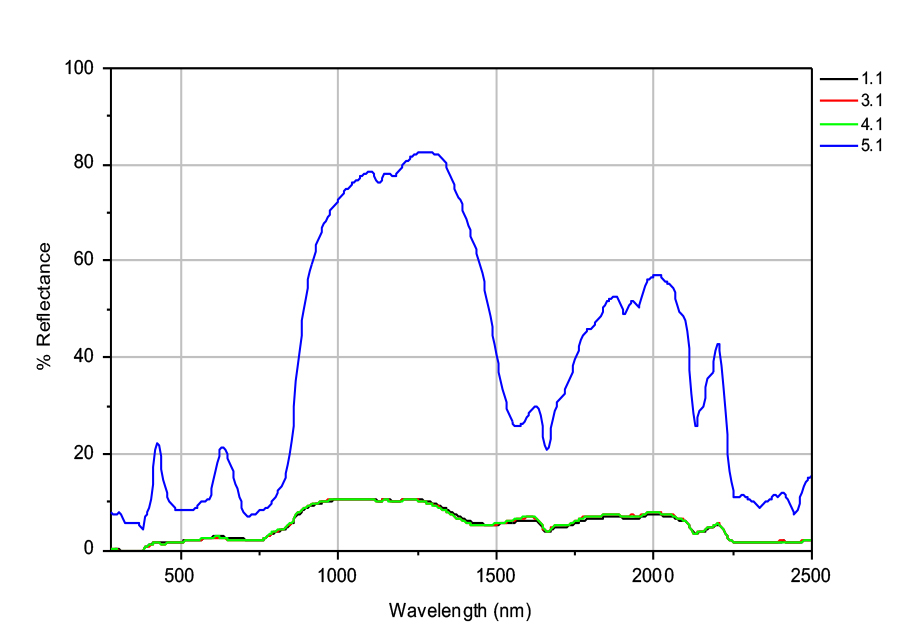
Spectral reflectance test specimen angle 60° detector angle 120°.
Conclusion
Through the experimental validation in Kubik, the following conclusions have been reached: - From the energy aspect, the technology has performances within the expected range for this type of technology. - From a constructive point of view, Heliasol has been well integrated into the façade solution (easy and fast adhesion) and into the building itself (simple assembly).
Regarding optical test, main conclusions are shown below: - No significant differences had been detected between samples of the same series. - Series 1,2 3 and 4 are very similar, just number 5 is a little bit different. - There are differences between angles. In higher angles the reflectance value is lower in all cases.
CONSTRUCTION SEGMENT
TEST CATEGORY
Indoor and Outdoor Performance
DATE
06 October, 2025
